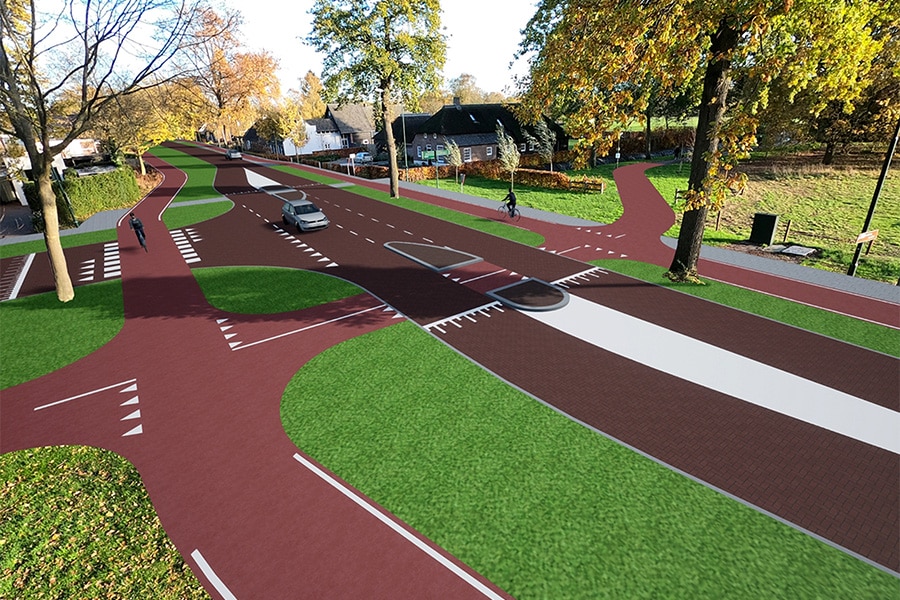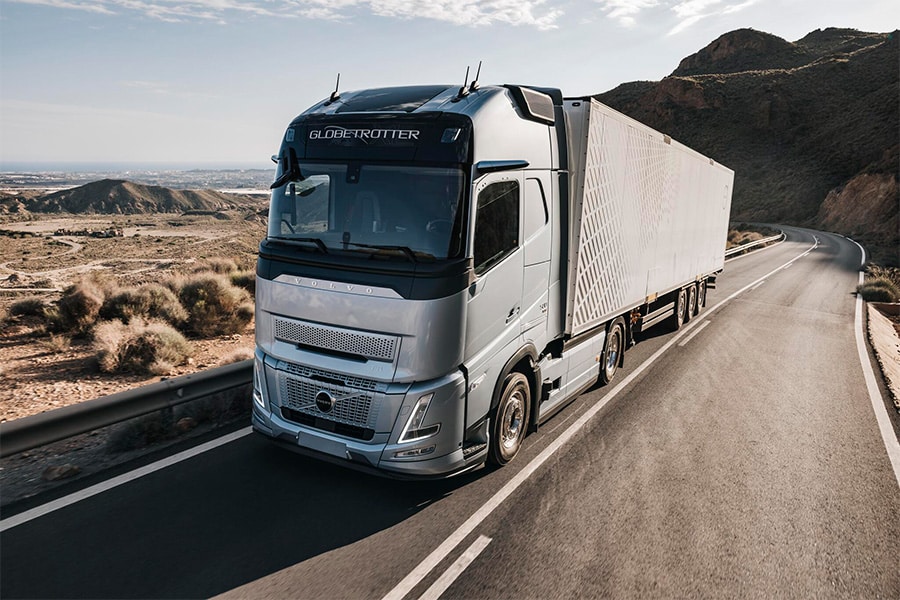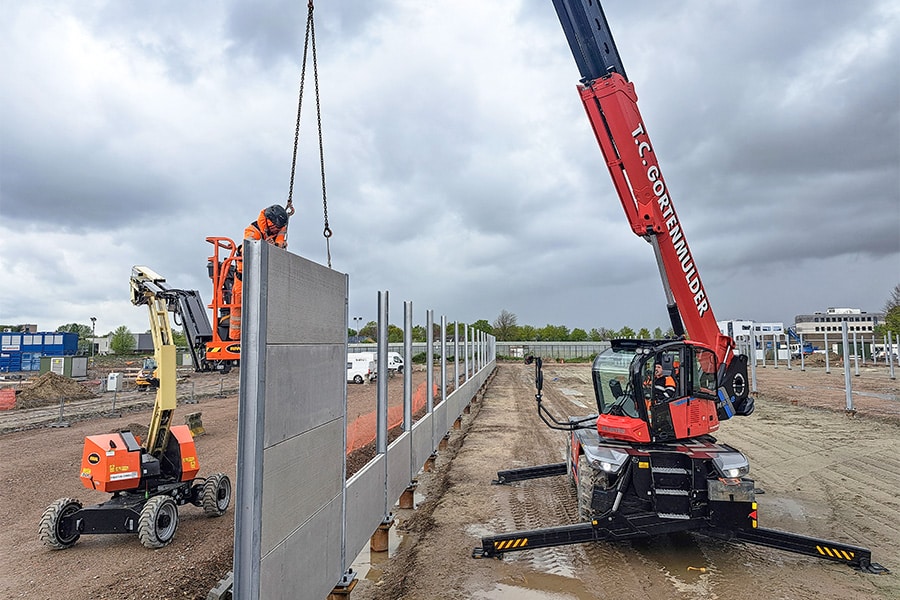
Large-scale redesign requires more than a design
The Ollandseweg in Sint-Oedenrode is undergoing a major overhaul. The European tendering procedure has now started. Commissioned by Gemeente Meijerijstad, Iv-Infra created the complete design for the redesign, organized the public participation evenings and worked out the technical preparations. Iv-Infra was involved from A to Z right up to the tender stage. An increasingly common method.
The Ollandseweg is a road of approximately 3.5 kilometers between the village of Olland and Sint-Oedenrode, located in the municipality of Meijerijstad. The original road consists of a bicycle path and a lane for motorists. But the bike path in particular has been in poor condition for years. So much so, that cyclists increasingly choose to cycle on the carriageway, resulting in dangerous situations. In addition, the roadway no longer meets current road safety requirements. Together this has made the town council decide to rebuild the Ollandseweg.
Comprehensive participation process
Iv-Infra has been extensively involved in this redesign since the plans were drawn up about a year and a half ago. A significant portion - 1.5 kilometers - of the total route is within the built-up area in Sint-Oedenrode. Along Ollandseweg there are a large number of houses and businesses both inside and outside the built-up area. A good, comprehensive and clear public participation procedure is therefore of great importance. The final design of the redesign was created together with local residents and stakeholders, an essential part of the participation process.
Those public participation and information evenings, together with the expertise from Iv-Infra and the Municipality of Meijerijstad, led to a complete reconstruction of the Ollandseweg. On both sides of the road, both inside and outside the built-up area, the bike path will be constructed with connected concrete slabs to increase driving comfort. Inside the built-up area the lane will consist of noise-reducing clinkers to reduce nuisance. The lane outside the built-up area will consist of new asphalt pavement.
Increase security
New connections will be made along the bicycle lanes towards the residential streets, and measures have been taken at three crossing points to improve safety for cyclists, pedestrians and other traffic. The roadway is designed to make the road appear narrower than it really is, which generally results in slower driving.

Climate Adaptation
Within the design, the changing climate has been taken into account as much as possible. Heavy precipitation can cause rainwater to be unable to drain away properly in older infrastructure, which can also cause dangerous traffic situations. Drainage along the entire route will be improved and parking spaces will be redesigned along the parallel roads near Koninginnelaan and Laan ten Rode. These will be permeable so that rainwater will be properly collected.
A reconstruction like the one on Ollandseweg always has an impact. Not only for local residents, but also for the flora and fauna in the area. The local road is accompanied by no less than 480 oaks. One of the main principles within the design is to preserve these trees as much as possible. Although the road will be partially relocated or altered in some places, the vast majority have been retained.
Replanting
For trees that did have to give way, new trees will be planted. The trees have been mapped by means of an extensive 3D scan and a Tree Impact Analysis has been carried out to assess the state of the flora as well. During the work, the contractor will have to take flora and fauna in the area into account. Iv-Infra has drawn up a work protocol to ensure that birds and bats, among others, will not be disturbed.
In addition to the design, drawing up a work protocol and organizing residents' evenings, Iv-Infra drew up a detour and phasing plan. As the work will take almost two years, it will be carried out in various phases, which are detailed in the phasing plan. This is done in part to limit inconvenience caused by the work.

The best plan
Now that the implementation design is in place, parties can tender for this project. Not only the price is decisive, but mainly the plan that best suits the design and the wishes of local residents and stakeholders during the participation process. Also in relation to limiting nitrogen emissions.
The redevelopment of Ollandseweg is a project in which Iv-Infra is responsible from head to tail (the start of construction) not only for the design, but also for quality, communication with stakeholders, budget monitoring and planning.
An integrated approach
Improving the accessibility, traffic flow and road safety of municipal infrastructure - in combination with making it climate proof - is moving up the political agendas. Many municipalities have more diverse issues, where an integrated approach is increasingly being adopted. Iv-Infra provides services in such areas as space and mobility, measurement and monitoring, risk management, asset management, contract management and management and supervision.



